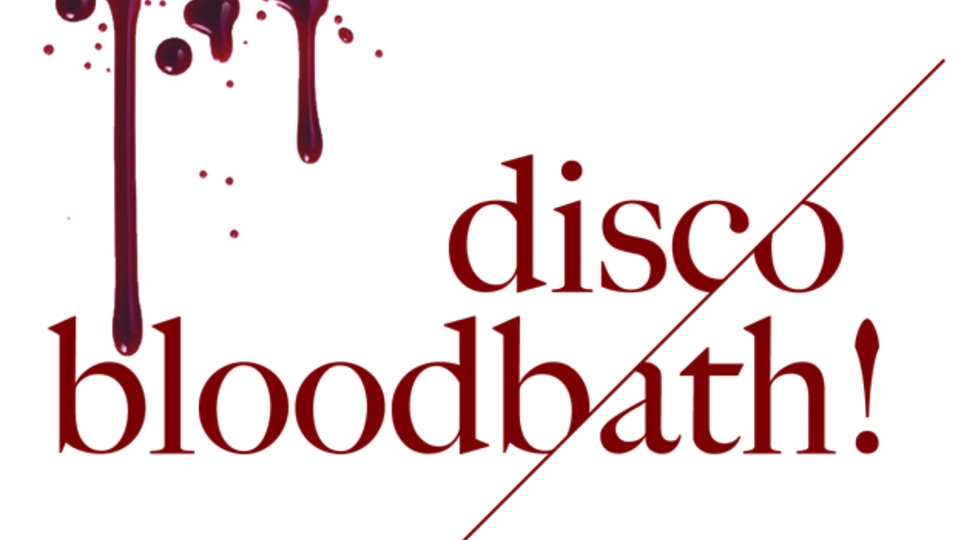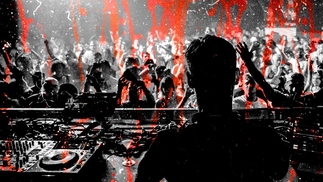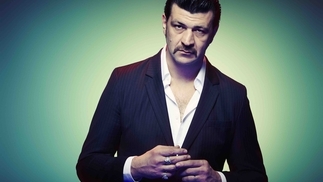DISCO BLOODBATH!
The creepy synth sounds of horror movie soundtracks by Goblin, Fabio Frizzi and John Carpenter have proven hugely influential on modern electronic music. DJ Mag dares to delve into the darkness to find why they're such an inspiring, disturbing delight...

But whilst these cheap horror films with their copious sex and violence might not have brought about the nation’s moral decay, they have wormed their way in, in other ways. Often produced on the cheap synthesizers that were becoming accessible at the same time as VHS brought the cinema into the living room, many of the soundtracks had a then-alien electronic quality, as the composers sought to push the boundaries of the form as far as the directors pushed the limits of taste, and you can hear the influence of horror soundtracks echoing through plenty of contemporary electronic music like memories of a bad dream.
ANCIENT EVILS/MODERN SOUNDS
Boards of Canada claim that the grainy textures of their recent ‘Tomorrow’s Harvest’ album were a direct tribute to video nasty soundtracks, whilst the Tri Angle label has even spawned the entire spurious genre of ‘witch house’ with artists like Salem slowing horror movie samples down into disturbing sonic nightmares. Nor are you safe on the dancefloor, with the likes of Violetshaped and These Hidden Hands making blood-curdling industrial techno and the more extreme ends of drum & bass long peppered with horror film samples, while the staccato stabs in many grime records often feel like the sound of a knife plunging down.
Plus, it’s not too hard to imagine the spectral voices in a Burial tune as the soundtrack to some Gothic keep. Meanwhile, the so-called ‘hauntology’ scene centred around labels like Ghost Box, has artists such as Belbury Poly sampling cult British films to create cobwebbed electronica.

Those films — exemplified by 1973’s recently re-released The Wicker Man — featured acid-fried folk music that felt like the hippy dream gone rotten or ancient evils roaming the moors, often themes in the films themselves and a clear influence on the music of Demdike Stare, whose name is taken from one of the women executed during the 17th Century Pendle Witch trials. One half of the duo, Sean Canty, has also made his love of horror films clear with his Pre-Cert Home Entertainment label. A reference to the films released before the 1984 Video Recordings Act (introduced in the wake of the video nasty scare) required films to pass the censors before they were released on video as well as in cinemas, Pre-Cert Home Entertainment is an outlet for imaginary horror soundtracks steeped in occult references, often produced under pseudonyms such as Anworth Kirk by Sean and label co-owner Andy Votel, who also runs the Finders Keepers label as a home for obscure reissues and esoteric psychedelia.
“I got into horror films mainly for the music because I’m not into gore,” Andy explains. “What’s fascinating about horror is that it’s where composers go to experiment — because horror’s often seen as ‘trash’, people have less inhibitions so someone like Ennio Morricone could try things he’d never get away with on a big Hollywood picture. But with the domestication of VHS also came the domestication of synthesisers so you had people who weren’t trained to make music doing the soundtracks. There’s a film called Slumber Party Massacre where the director got her brother to do the soundtrack and all he had was one of the first Casio keyboards and a couple of wine glasses. It’s when things like that happen that you get the most interesting music being made.”
JOHN CARPENTER
‘Video nasties’ weren’t the first time electronic music had been used to evoke horror. 1956’s sci-fi classic Forbidden Planet used eerie electronic sounds in its score, and early Dr. Who probably wouldn’t have sent as many people scurrying behind the sofa if it hadn’t been for the weird electronic effects dreamed up in the BBC Radiophonic Workshop. In fact, Andy draws the connection back to an altogether different kind of ‘dance music’ to today, explaining that in the 1950s Pierre Henry — one of the forefathers of early electronic musique concrete — also worked on ballet, an art-form which often dwells on macabre subject matter like the virgin sacrifice in The Rite of Spring.

In the 1970s, films like 1974’s The Texas Chainsaw Massacre and 1977’s Eraserhead had also used sound collage electronic techniques like warped tape recordings and mechanical noise on their soundtracks, but one of the first and most famous horror films to use an almost purely electronic specially-composed score was 1978’s Hallowe’en. Written and performed by the film’s director John Carpenter, who had experimented with synths on earlier soundtracks like 1976’s Assault On Precinct 13, the Hallowe’en score employed little more than a simple but sinister synthesizer motif set to an unsettling time signature. Much as the story of Michael Myers stalking through small-town America would set the template for the likes of the Friday the 13th franchise, so Carpenter’s synth score for Hallowe’en — and also later films like 1981’s Escape From New York — would be oft-imitated on plenty of video nasties. But, with its clear parallels with the similarly synthetic sound of Giorgio Moroder during the same era, Hallowe’en’s influence has also spread onto the dancefloor into Italo disco and by extension Daft Punk, as well as to India, where composers like Bappi Lahiri working on Bollywood B-movies combined electronic disco with dramatic strings, as can be heard on the Finders Keepers ‘Bollywood Bloodbath’ compilation.
“The thing about John Carpenter is that he writes very simple but powerful melodies with minimal arrangements, with usually just a drum machine and a bassline on a synth, which was pretty new in the '70s when movie scores were more orchestrated,” says Cosmic Neman of French group Zombie Zombie, who re-recorded some of his seminal themes for 2010’s ‘Zombie Zombie Plays John Carpenter’ LP. “We wanted to show how he wrote hits that could work without images, and that we could play his music in clubs and people would dance.”
IMAGINATION
Hallowe’en has also cast its shadow over Matt Hill aka Umberto, the American producer who nodded in Carpenter’s direction on his cinematic-sounding albums like 2009’s ‘From the Grave’ and played alongside Zombie Zombie at a John Carpenter festival in Geneva. “What I like about his soundtracks is that they’re not over-the-top,” he explains. Not something that can be said about ‘Pieces’, the 1983 slasher flick directed by Juan Piquer Simon for which Umberto composed an alternative soundtrack. “It’s about a guy who kills women and chops off a different body part on each to put together a human jigsaw puzzle,” he elaborates. “The plot is mental. The murders are nuts. The end is just ridiculous. It has everything that I enjoyed in a horror film when I was a kid.” In keeping with Umberto’s belief that the best horror soundtracks build suspense, he created a sublimely creepy synth soundtrack that he performed live at 2012’s Glasgow Music and Film Festival, after which Mogwai — who have penned their own horror soundtrack for French TV series Les Revenants (shown on Channel 4 as The Returned) — released it as the ‘Night of A Thousand Screams’ album on the band’s Rock Action label.
Some producers take a more tangential approach to horror as their source material than covering soundtracks or creating ones for existing films, with Type Records head honcho and producer John Twells intending the eldritch sea shanties and phantom drones of his 2006 ‘The Dead Sea’ album as Xela to be read as a sonic narrative about a ship over-run by zombies. “I wanted it to mimic the prog rock concept albums I used to obsess over in my dad's record collection. The concept was ripped directly from zombie movies and [early American horror author] H.P Lovecraft books,” he explains. Now resident in the USA, John remembers first watching video nasties growing up in Walsall.
“Like many '80s babies I was obsessed with video nasties, and used to spend many hours poring through boxes of VHS tapes at markets. I started with Hammer movies probably, then went on to the '80s classics like Nightmare on Elm Street and then had to get more obscure. I think City of the Living Dead was my first Italian horror movie, and I picked it up simply because the title sounded cool. It was fucking crazy — the zombies could effectively teleport and the narrative was like a dream. At 14-years-old it shaped the way I thought about horror, and I was hooked.”
FABIO FRIZZI AND GOBLIN
Directed by Lucio Fulci, City of the Living Dead was an offshoot of the Italian giallo movies of the '70s and '80s. Schlock horrors and thrillers with lashings of gratuitous gore, giallo films like 1978’s Killer Nun were a European interpretation of American grindhouse movies similar to the way ‘spaghetti westerns’ were an Italian take on the western, and indeed the great spaghetti western composer Ennio Morricone moonlit on giallo films. Influenced by Morricone’s orchestrations but adding the squelch of early synthesisers, composer Fabio Frizzi struck up a long-standing partnership with Lucio, and his music is as integral a part of films like 1981’s The Beyond as the scores of Danny Elfman — who clearly owes Fabio a debt of inspiration — are in Tim Burton’s films.

“It’s impossible to create an entirely ‘new’ sound but every composer can create something truly personal with the means he decides to use,” Fabio believes. “I think all the means of sound production are equal in dignity, and a musician’s creative approach can count on the traditional sound of violins as well as more acidic synthesizers. I like to use everything with the help of the best musicians because a composer is nothing without good performers.”
With a new generation delving into giallo films after stumbling across murky clips on YouTube, there’s been a resurgence of interest in Fabio’s music, with him conducting a string section through a set of his most famous themes at London’s Union Chapel this Hallowe’en. Goblin — who collaborated with Fabio on 1974’s ‘Amore Libero’ album — have also been raised from Italian horror’s past recently and are currently touring the USA, much to the delight of keyboardist Maurizio Guarini, who hardly sounds like a necromancer of spine-chilling sounds when he starts gushing about how much he loves everyone who’s come to their shows. Yet that’s exactly what Goblin were. Originally a prog rock band inspired by King Crimson, Goblin provided the soundtrack to Dario Argento’s 1975 film Profondo Rosso and 1977’s Suspiria. The story of a ballerina who uncovers a coven of witches, Goblin’s Suspiria soundtrack is equally as brain-frying as the film’s visuals. A cauldron of ritualistic drumming, feral chanting, primitive synth sounds and extravagant guitar histrionics that’s sometimes as screamingly camp as likely to set you screaming, Suspiria is one of the most influential horror soundtracks ever and set out a style that would evolve throughout their ongoing partnership with Dario and on films like George A Romero’s 1978 Dawn of the Dead before the band first split up.
“At that time there weren’t that many electronic instruments around — just a few mono synthesizers — so we were trying to be creative with them,” Maurizio recalls. “We didn’t think there was anything we ‘should’ or ‘shouldn’t’ do musically because a horror film needs to scare the audience and as long as the soundtrack helps achieve that sensation anything can work. But making movies now is so different because the industry wants more control, so everything is more standard and must have the same kind of music for a particular kind of scene. Back then we had more freedom to express ourselves.”
ALLEGORY
Goblin have just released new versions of their most famous tracks on the ‘Goblin Live’ EP on the Death Waltz label, which has also reissued soundtracks to John Carpenter’s ‘The Fog’ and ‘Assault On Precinct 13’. But whilst Maurizio might miss the creative freedom of the '70s, many of the soundtracks, such as 1970’s ‘Valerie and Her Week of Wonders’ Andy Votel has unearthed on Finders Keepers were composed under eyes much more oppressive than Hollywood’s. After the Soviet occupation of Czechoslovakia in 1968, directors like Jaromil Jires disguised political parables as surreal fairytales to express ideas that would be thought ‘subversive’ by Communist censor
That tradition of horror as allegory also informed last year’s ‘1612 Underture’ album by Eccentronic Research Council on the label. A series of spoken word pieces set to a backing of vintage synthesizers, ‘1612 Underture’ ostensibly recounted a road-trip into the Pendle countryside and a psycho-geographical journey back into the same blood-soaked history that inspired Demdike Stare. Yet for all its tales of witchcraft and antique electronics haunted by the ghost of the BBC Radiophonic Workshop’s Delia Derbyshire — to whom Eccentronic Research Council have paid direct tribute on their new EP on their own Desolate Spools label — ‘1612 Underture’ is actually a thoroughly contemporary state-of-the-nation address, as the group’s Adrian Flanagan explains.
“When you read about them and look beyond this disgraceful ‘evil ugly women’ tag they've acquired over the centuries, you find poor people living on their wits' end trying to feed their families whilst being marginalised, scapegoated and hunted by their government,” he says. “That made me think of the parallels currently infesting modern Britain, and how our government are treating the disabled, the unemployed and the sick.”
‘1612 Underture’ taps into the same vein of British horror in films from 1970’s Blood On Satan’s Claw to Ben Wheatley’s recent A Field In England, a quality Adrian also detects in '70s kids TV shows like Children of the Stones and books like Alan Garner’s The Owl Service which he describes as “really pastoral and gentle whilst simultaneously being bloody weird and shit-the-bed scary”. Andy, for his part, thinks of British horror as “more brooding and psychological” and says its preoccupations — “fate and old religion and folklore” — are also those with which Pre-Cert Home Entertainment records like N Racker’s ‘Flock Toxicant’ are obsessed.
Not that all digging into the past reaps such rich rewards. According to Andy, “Just sampling an old horror film over a mid-tempo beat basically becomes gentrified hip-hop that isn’t too far off the more whitewashed '90s trip-hop”. However, all the artists DJ Mag speaks to agree that the '70s and '80s represented a golden era for horror film soundtracks, with a sense of experimentation missing from the music of modern movies like Hostel and Saw which are often as depressingly predictable as the films themselves.
“The films [of that era] allow you to exit from reality for a couple of hours and to come into contact with strong feelings,” Fabio muses. “The soundtrack is what makes you remember those emotions, even when far from the cinema. Music is a strange art, in some cases it is able to enter the heart and stomach better than a scalpel.”
For it wasn’t just on screen where people were spilling their guts.



